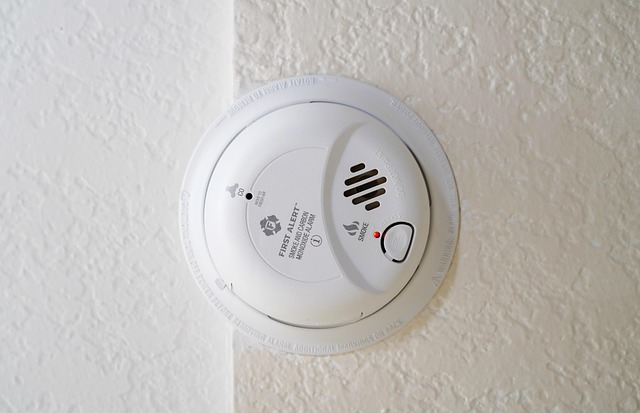By Carol Baldwin
Local Journalism Initiative Reporter
Wakaw Recorder
To help bring the dangers of the invisible, odourless, tasteless gas sharply into focus, the Government of Saskatchewan proclaimed the first week of November as Carbon Monoxide Awareness Week. During the week, SaskEnergy, the Technical Safety Authority of Saskatchewan (TSASK) and the Saskatchewan Public Safety Agency (SPSA) have been sharing important carbon monoxide (CO) safety reminders with the public.
“The Government of Saskatchewan is pleased to support Carbon Monoxide Awareness Week as part of our ongoing commitment to safe and secure communities,” Minister Responsible for SaskEnergy Jeremy Harrison said. “Awareness is a critical step in preventing carbon monoxide-related incidents, and we are proud of SaskEnergy’s collaboration with provincial safety organizations as they take a unified, one-team approach to protecting the people of Saskatchewan.”
Any appliance or equipment that burns fuel, including fireplaces, gas stoves, water heaters, furnaces, grills, generators or car engines, can cause a carbon monoxide (CO) build-up. Warning signs that may indicate a carbon monoxide buildup include stuffy air, the sudden formation of excessive moisture on walls and windows, soot buildup around appliances and vents, everyone in the home becoming ill with flu-like symptoms at the same time, and a yellow flame in a natural gas or propane appliance instead of blue. The orange or yellow gas flame indicates that the gas is not being completely burned, and the incomplete combustion that causes these abnormal flames can lead to a carbon monoxide buildup in your home.
Every year, too many citizens in Saskatchewan die or become seriously ill due to carbon monoxide poisoning. Last year, SaskEnergy received over 1,500 calls related to this issue. Carbon monoxide is a chemical compound produced when a fire does not receive enough oxygen to burn properly. When inhaled, carbon monoxide molecules replace oxygen in the bloodstream, leading to reduced oxygen supply to the brain and other tissues. This lack of oxygen can cause cell starvation and, ultimately, death. The danger of carbon monoxide lies in the fact that it is odourless, tasteless, and invisible, making detection difficult until symptoms of poisoning appear. This is why it is often referred to as a “silent killer.” In severe cases, carbon monoxide poisoning can lead to brain damage and death, claiming the lives of more than 50 Canadians each year.
Symptoms of CO poisoning can include headaches, dizziness, confusion, and nausea. CO poisoning can happen to anyone, but some people, especially the elderly, infants and those with heart or respiratory problems, are more likely to experience the effects of CO poisoning.
“Safety is fundamental to SaskEnergy’s mission, which is why we work closely with provincial safety agencies such as TSASK and the SPSA, along with fire departments and community partners, to help educate Saskatchewan residents on how to detect and prevent CO incidents,” said Mark Guillet, President and Chief Executive Officer of SaskEnergy. “Carbon monoxide can’t be seen or smelled, but awareness and a working CO alarm can make all the difference.”
The most effective way to protect against carbon monoxide poisoning is to install a carbon monoxide detector on every floor of your home, particularly near sleeping areas. A working detector can sense harmful levels of this dangerous gas before symptoms occur, and the alarm will alert you to prevent exposure. Carbon monoxide alarms typically have an expiry date of five to seven years, so it is important to test and clean them regularly, just like smoke detectors. Additionally, remember to replace the batteries as recommended by the manufacturer.
“CO alarms are mandatory in all residential properties in the province,” said Wayne Rodger, Fire Marshal for the SPSA. “Whether you live in an apartment, condominium, a house or if it’s a new or old home, installing a CO alarm is a simple and safe way to protect you and your family from the dangers of CO.”
Carbon monoxide detectors are just one part of the solution. Practicing the following home maintenance and safety tips will help keep families safe:
Ensure gas equipment, appliances, and chimneys are installed, maintained, and inspected annually by a licensed contractor.
Clean dust and lint off CO detectors regularly.
Change your furnace filter periodically.
Never idle your vehicle in the garage; start lawnmowers and snowblowers outside.
Open a window before lighting a wood fireplace or stove and keep it open until the fire is out.
Keep the area around gas equipment clear for proper airflow to prevent CO buildup.
Check that furnace and water heater vent pipes are secure and in good condition.
Ensure furnace panels are in place and the fan compartment door is secure.
Keep flue vents and chimneys clear of debris, frost, and snow.
If a carbon monoxide alarm goes off, follow these steps:
·- If no one has symptoms of CO poisoning, turn off gas appliances and ventilate the home by opening doors and windows. If the alarm stops, continue ventilating until a qualified gas contractor can assess the situation.
·- If someone has symptoms of CO poisoning, evacuate immediately, seek medical help if necessary, and call 911 or the fire department from a safe location. Do not re-enter the home until CO levels are checked and deemed safe. If CO is detected, do not return until the source is identified and resolved.
For more information on CO safety and prevention tips, visit the SaskEnergy and the TSASK websites.
